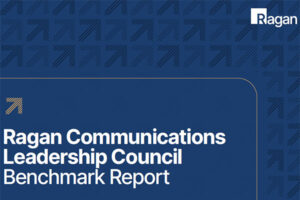How to implement ASL and other accessibility comms
We spoke with comms and accessibility experts on how to reach everyone.

As communications pros, we’re always thinking about how our messages are getting out to all the people we want to reach. Whether that’s through the written word, a video series, or an infographic, there are a plethora of mediums to relay what we’re trying to say.
But in today’s world, you must consider how to make your messaging accessible to everyone. By providing increased accessibility options such as American Sign Language (ASL), featuring interpreters at live events and captioning choices on video content, you can show employees and external audiences alike that you’re including everyone in the conversation — while opening up new paths to reach individuals with more diverse abilities.
From ideation to implementation
While it’s great to have an idea about how to make your communications more accessible, it’s another to actually go about doing it. Successfully implementing accessibility requires clear lines of communication open and understanding what needs have to be met.
“A major part of implementing accessibility is dependent on the relationships you’re able to cultivate,” said Patti Johnson, a global co-lead of Thrive, an employee resource group of PayPal. Johnson said that actively listening to the concerns and needs of those with differing abilities led her ERG to implement ASL interpretation at company-wide meetings.
Amanda Coffee, director of corporate affairs at PayPal, added that comms people have a direct role in how we can institute programs like the one at her organization.
“It’s our job to make sure the people who are instituting these programs are supported,” she said, “and we can do that by raising awareness both inside and outside the company through our storytelling abilities.”
Johnson added that instituting programs like ASL accessibility starts with educating both leaders and the general employee base about how they can make the organization stronger and more inclusive.
“When we were thinking of how we can employ more folks with disabilities, we thought, how can we educate people on these issues?” she explained. “Once you’ve gotten the education part down, it’s much easier to really get the ball rolling on wider changes that support accessibility and inclusion.”
Leadership buy-in
As with most new initiatives at an organization, implementing ASL and other accessibility education and inclusion programs begins at the top. If employees hear about the importance of the issue from their leaders in a personal way, it’s more likely to quickly take hold. Johnson shared an anecdote of a leader she worked with who struggled with a stutter, then created a blog about their issue to help create awareness and acceptance.
“By explaining a personal story, that really opens doors for people who might have their own struggles,” she said, “When employees hear these sorts of anecdotes, they might be willing to share personal accounts that can help galvanize support for resources that support those with differing abilities.”
Johnson added that the example of leaders taking a stand can also help advocate for change in terms of the resources people need.
“When leaders show up in a real way, they can create positive change by working with decision makers to make them aware of what accessibility needs have to be met.”
Building bridges
Accessibility might seem like it’s primarily a way to help people with differing abilities understand or access content, but it’s much more important and valuable than just that.
Shelby Edwards, CEO of Inclusive Communication Services, encourages comms pros to think about accessibility as more than just having a sign language interpreter at a conference—but also as a better way to bring our communications to a wider swath of the population. When this happens, accessibility becomes an integral part of our comms strategies.
“We should consider accessibility not as something that creates access for one group of people, but as a bridge that helps communication and understanding for everyone,” Edwards said. “That can create a workplace with more perspectives being heard.”
She added that when we think of accessibility as a necessary part of our comms strategies, it becomes familiar and can gain wide acceptance.
“When you’re taking a step forward for accessibility and inclusion it’s not just good for your employees — it’s good for your brand identity as an organization, too.”
Sean Devlin is an editor at Ragan Communications. In his spare time he enjoys Philly sports, a good pint and ’90s trivia night.








Sean, thanks for writing on this important communications topic. Your article is a good start and only scratches the surface of accessibility and specifically, accessible communications with its focus on internal events for employees (ie. focusing on ASL interpreters and captioning at company events and internal presentations only). Truly accessible and inclusive communications requires a broader corporate strategy and focus covering all areas of accessibility (products/services offered to consumers, physical, digital, communications, events,) for all audiences (employees, consumers, viewers, shoppers, communities, stakeholders and shareholders).
Honestly, companies who ignore the disabled community do so at their business and brand peril. The business case for disability inclusion and accessibility is crystal clear as the disabled community represents the world’s largest minority and is rapidly growing:
– 15% of the global population;
– 1 in every 4 Americans (26%);
– 1 in every 3 US households
– 1 in every 5 Canadians (22%)
– 70% of disabilities are non-apparent/invisible (not just mobility)
One last note on disability language and etiquette in the second paragraph of your article, specifically your reference to “individuals with more diverse abilities”. This type of language is often used by those without disabilities in fear of offending those with disabilities. It’s an individual choice of how each person identifies with their disability – either people-first language (person who is deaf) or identity-first language (Deaf person). However, most within the disability community would follow what Emily Ladau (author of the book, Demystifying Disability”) says, “Don’t Dance Around Disability”. Just say the word.